What's New
Displaying results 3681 - 3690 of 4922
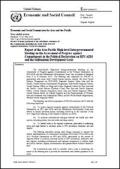
Resource | Publications,
The Asia-Pacific High-level Intergovernmental Meeting on the Assessment of Progress against Commitments in the Political Declaration on HIV/AIDS and the Millennium Development Goals was convened in Bangkok from 6 to 8 February 2012.
The Meeting was held in pursuance of ESCAP resolution 66/10 with the following objectives:
(a) To assess regional progress against commitments in the Political Declaration on HIV and AIDS and the Millennium Development Goals and efforts to ensure universal access, including follow-up to the outcome of the 2011 High-level Meeting of the General Assembly on AIDS;
(b) To promote multisectoral dialogue between the health and other sectors, including justice, law and order and drug control;
(c) To identify areas as for regional cooperation, particularly in addressing policy and legal barriers to universal access to HIV prevention, treatment, care and support.
The Meeting identified, among other things, measures to support the further implementation of Commission resolutions 66/10 and 67/9 as well as the 2011 Political Declaration on HIV and AIDS, particularly in the context of regional efforts to promote universal access to HIV prevention, treatment, care and support, including multisectoral and regional cooperation to address legal and policy barriers, stigma, discrimination and gender-based violence related to HIV.
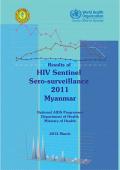
Resource | Publications,
The annual HIV Sentinel Sero‐surveillance survey, the systematic and regular collection of information on the occurrence, distribution and trends of HIV infection and factors associated with the infection, has been carried out since 1992. The survey has been conducted among 8 targeted sentinel groups: Pregnant Women attending the antenatal clinics (ANC), New Military Recruits, Blood Donors, newly diagnosed TB patients, Injecting Drug Users (IDU), Men who have Sex with Men (MSM), Female Sex Workers (FSW) and Male patients attending sexually transmitted infection (STI) clinic.
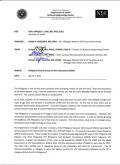
Resource | Fact Sheets,
The Philippines is one of only seven countries with an increasing number of new HIV cases. Since the population of 94 million people is big, if the HIV prevalence reaches 1%, that will mean 940,000 Filipinos will be infected with HIV. The country cannot afford this predicament.
As of 2011, the majority of HIV infections are among males who have sex with other males (MSM), people who inject drugs (IDU) and females in prostitution (FSW) who are also lDU. At the end of 2011, there was an estimated 19,022 adults living with HIV. If this HIV situation continues, the number can rise to 35,941, and the country would not be able to achieve Millennium Development Goal 6.
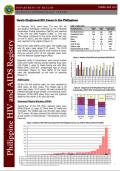
Resource | Fact Sheets,
In February 2012, there were 274 new HIV Ab seropositive individuals confirmed by the STD/AIDS Cooperative Central Laboratory (SACCL) and reported to the HIV and AIDS Registry (Table 1). This was 72% higher compared to the same period last year (n=159 in 2011), and the highest number of cases ever reported in the registry [Figure 1].
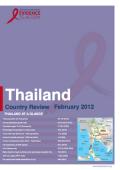
Resource | Reviews and Snapshots,
Thailand was one of the few countries to have demonstrated success in the 1990s in slowing down the spread of the HIV epidemic – largely due to its policy of 100% condom use in the commercial sex industry. Indeed, Thailand has had one of the most effective national responses to the HIV epidemic in the world, particularly in the scale and scope of widespread impact.
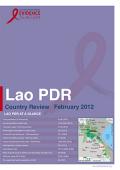
Resource | Reviews and Snapshots,
The first HIV-positive case was reported in the country in 1990 and the first AIDS case in 1992. In 2010, Lao PDR reported 612 HIV cases, 366 AIDS cases and 132 deaths due to AIDS-related illness. Cumulatively since 1992, there have been 2736 AIDS cases and 1170 AIDS-related deaths. Among the reported HIV cases, women made up 45% of the total.
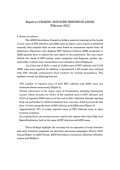
Resource | Publications,
The AIDS Surveillance Committee holds a quarterly meeting on the trends in new cases of HIV infection and AIDS cases in Japan, and are port is published annually that compiles data on new cases based on anonymous reports from all prefectures. Physicians who diagnose HIV infection (without AIDS symptoms) or AIDS patients have to submit the case report to the prefectures. The case report includes the result of HIV testing, major symptoms, and diagnosis, gender, age, nationality, resident area, transmission route and place, date of diagnosis.
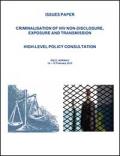
Resource | Publications,
Across the world, many countries and legal jurisdictions have adopted HIV-specific laws or invoked general criminal law to prosecute individuals who allegedly fail to disclose their HIV status prior to sexual relations (HIV non-disclosure), expose others to HIV (HIV exposure), and/or transmit HIV to others (HIV transmission). Although the exact number of initiated and completed prosecutions for HIV non-disclosure, exposure and transmission is unknown, the Global Network of People Living with HIV has identified some 600 known convictions for HIV non-disclosure, exposure or transmission, the great majority of which have taken place in high income countries.
Over the years, many advocates, human rights and public health experts, and people living with HIV have voiced their concerns about the nature and impact of the criminalisation of HIV non-disclosure, exposure and transmission. Legal criticism against these laws and practices points to the facts that they are often not informed by evidence relating to HIV, disregard generally applicable criminal law principles, and have resulted in disproportionately harsh sentences in several cases. Public health concerns relate to the facts that there is no evidence that the criminal law is an effective tool for HIV prevention, while there is some indication that fear of prosecution discourages people from getting tested for HIV or disclosing their HIV status.
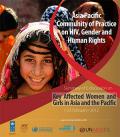
Resource | Publications,
From 1-23 February 2012, the Asia Pacific Community of Practice on HIV, Gender and Human Rights (HIV-APCoP) held an e-discussion on Key Affected Women and Girls in Asia and the Pacific with the primary objective of stimulating dialogue to ensure proper policy attention is paid to key affected women and girls in the context of HIV.
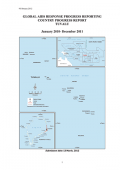
Resource | Publications,
Tuvalu formerly known as the Ellice Islands is located in the South Pacific, just to the north of the Fiji Islands. It is the smallest independent country in the South Pacific, comprising of nine low lying coral atolls with a population of 9561.
Tuvalu reported its first case of HIV in 1995. Since then there has been 11 confirmed cases of which four have died (all were males and the deaths occurred in the years 2004, 2007, 2008, 2011).





